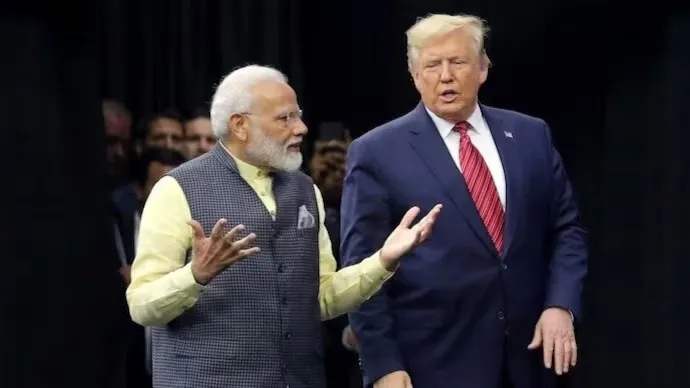US President Donald Trump reportedly attempted to speak with Indian Prime Minister Narendra Modi on four separate occasions in recent weeks, but the calls were not answered. The information was published by the German newspaper Frankfurter Allgemeine Zeitung, which described Modi’s silence as both a sign of frustration and a deliberate diplomatic strategy.
The cooling of relations between New Delhi and Washington comes amid escalating trade tensions. Trump recently imposed steep tariffs—up to 50 percent—on Indian exports, making it one of the harshest trade actions taken against any country apart from Brazil. The U.S. administration has cited India’s trade surplus and its continued purchase of Russian oil as the main reasons for the move.
According to analysts quoted in the German daily, Modi’s decision to avoid Trump’s calls was not only about personal irritation but also about maintaining negotiation leverage. Trump has a history of using direct phone conversations as a tool to push through his agenda, as seen in previous disputes with countries like Vietnam. Modi, they suggest, was unwilling to give Trump an opportunity to control the narrative unilaterally.
The newspaper further noted that Modi may have taken offense at some of Trump’s recent comments. The U.S. president had reportedly described India as a “dead economy,” a remark that could have contributed to Modi’s refusal to engage. By not responding, the Indian leader signaled both displeasure and a desire to avoid being cornered into unfavorable concessions.
Diplomatic observers believe the episode reflects India’s broader shift in foreign policy. While New Delhi values its partnership with Washington, it is also increasingly determined to balance relations with other major powers, including Russia and China. Modi’s silence, in this sense, may symbolize India’s willingness to assert independence on the global stage rather than remain a passive partner.
The tariff issue is set to become even more pressing, with the new trade measures scheduled to take effect from August 27. This will significantly raise the cost of Indian goods entering the U.S. market, potentially hurting key sectors such as textiles, pharmaceuticals, and machinery. For many Indian exporters, the sudden escalation could mean a major financial blow.
At the same time, the standoff has left U.S. companies operating in India uncertain about the future of bilateral ties. Several business leaders have warned that the tariffs could backfire by reducing American competitiveness in the Indian market, which remains one of the fastest-growing consumer bases in the world.
So far, the Indian government has neither confirmed nor denied the report that Modi refused Trump’s calls. This ambiguity has fueled speculation and raised questions about the extent of the diplomatic rift. For now, official statements from both sides have remained cautious, with neither eager to publicly escalate the dispute further.
Still, the silence from New Delhi has been interpreted internationally as a bold statement. Rather than rushing to placate Washington, India appears ready to absorb short-term economic pain in exchange for long-term strategic autonomy. This approach marks a sharp departure from the past, when Indian leaders often sought to smooth over disagreements with U.S. administrations.
As the tariff deadline approaches, all eyes will be on whether back-channel negotiations manage to ease tensions. If not, the rift could represent one of the most serious challenges to U.S.–India relations in recent memory, reshaping the balance of power in Asia and beyond.
